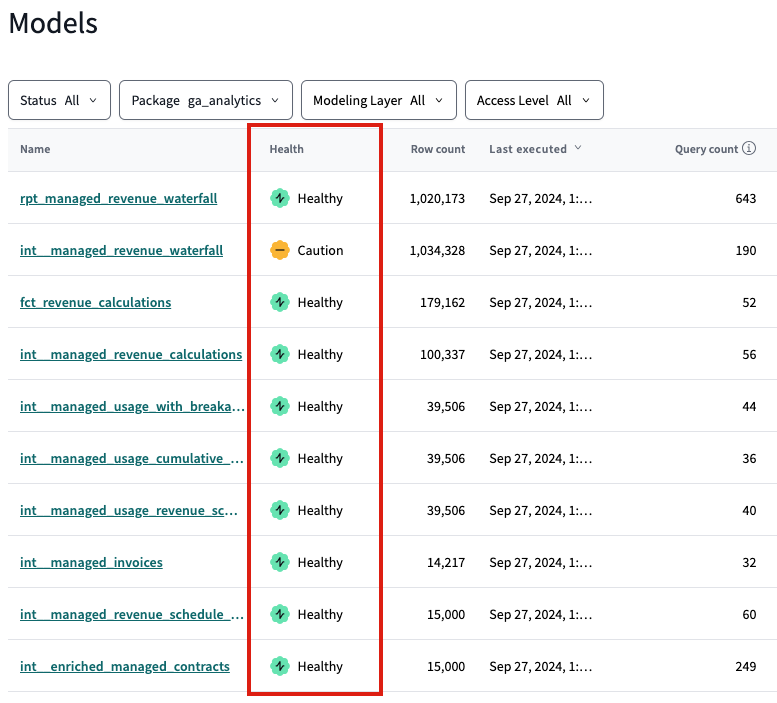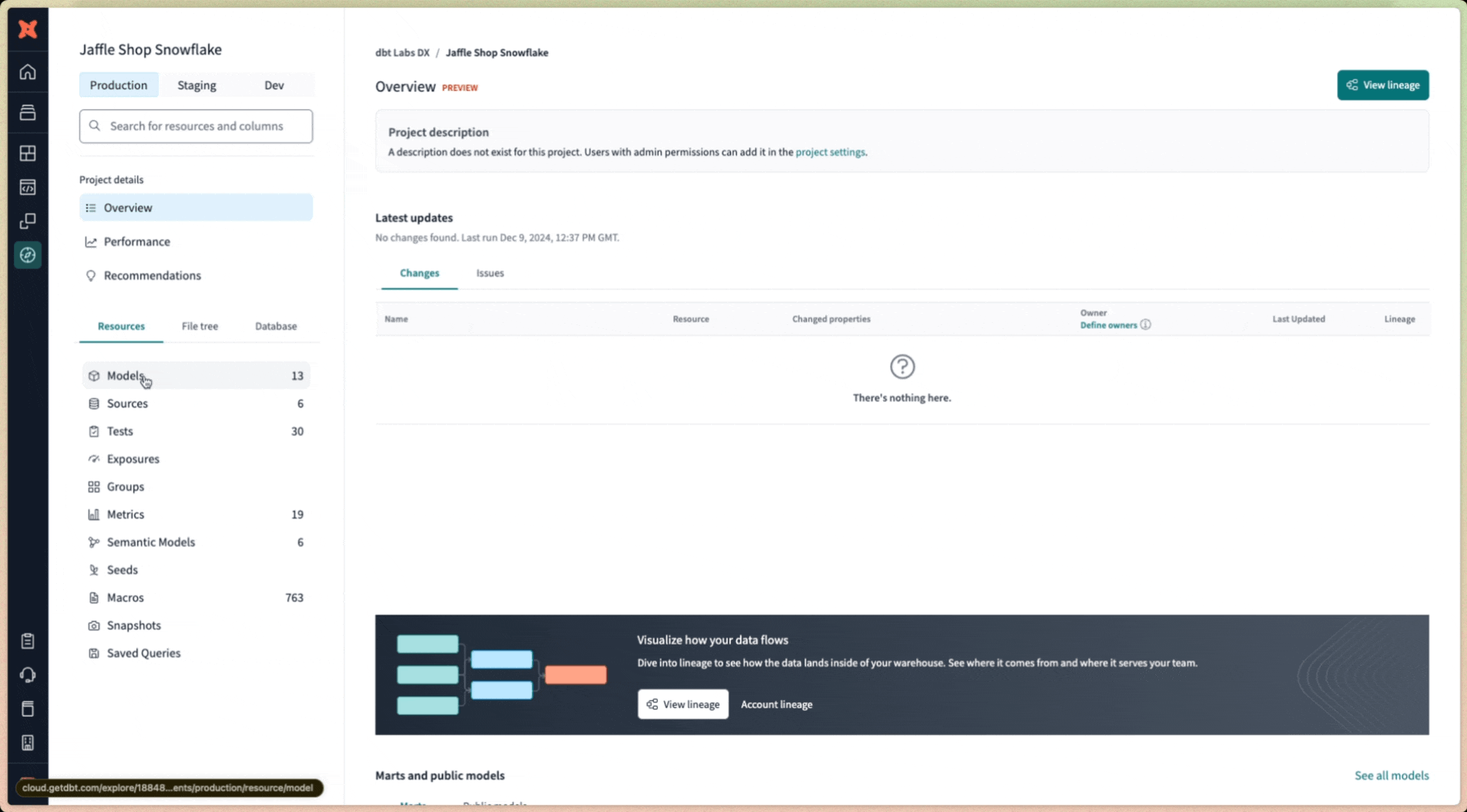Data health signals preview
Data health signals offer a quick, at-a-glance view of data health when browsing your resources in Explorer. They keep you informed on the status of your resource's health using the indicators Healthy, Caution, Degraded, or Unknown.
- Supported resources are models, sources, and exposures.
- For accurate health data, ensure the resource is up-to-date and had a recent job run.
- Each data health signal reflects key data health components, such as test success status, missing resource descriptions, missing tests, absence of builds in 30-day windows, and more
Access data health signals
Access data health signals in the following places:
- In the search function or under Models, Sources, or Exposures in the Resource tab.
- For sources, the data health signal also indicates the source freshness status.
- In the Health column on each resource's details page. Hover over or click the signal to view detailed information.
- In the Health column of public models tables.
- In the DAG lineage graph. Click any node to open the node details panel where you can view it and its details.
- In Data health tiles through an embeddable iFrame and visible in your BI dashboard.
Data health signal criteria
Each resource has a health state that is determined by specific set of criteria. Select the following tabs to view the criteria for that resource type.
- Models
- Sources
- Exposures
The health state of a model is determined by the following criteria:
| Health state | Criteria |
|---|---|
| ✅ Healthy | All of the following must be true: - Built successfully in the last run - Built in the last 30 days - Model has tests configured - All tests passed - All upstream sources are fresh or freshness is not applicable (set to null)- Has a description |
| 🟡 Caution | One of the following must be true: - Not built in the last 30 days - Tests are not configured - Tests return warnings - One or more upstream sources are stale: - Has a freshness check configured - Freshness check ran in the past 30 days - Freshness check returned a warning - Missing a description |
| 🔴 Degraded | One of the following must be true: - Model failed to build - Model has failing tests - One or more upstream sources are stale: - Freshness check hasn’t run in the past 30 days - Freshness check returned an error |
| ⚪ Unknown | - Unable to determine health of resource; no job runs have processed the resource. |
The health state of a source is determined by the following criteria:
| Health state | Criteria |
|---|---|
| ✅ Healthy | All of the following must be true: - Freshness check configured - Freshness check passed - Freshness check ran in the past 30 days - Has a description |
| 🟡 Caution | One of the following must be true: - Freshness check returned a warning - Freshness check not configured - Freshness check not run in the past 30 days - Missing a description |
| 🔴 Degraded | - Freshness check returned an error |
| ⚪ Unknown | Unable to determine health of resource; no job runs have processed the resource. |
The health state of an exposure is determined by the following criteria:
| Health state | Criteria |
|---|---|
| ✅ Healthy | All of the following must be true: - Underlying sources are fresh - Underlying models built successfully - Underlying models’ tests passing |
| 🟡 Caution | One of the following must be true: - At least one underlying source’s freshness checks returned a warning - At least one underlying model was skipped - At least one underlying model’s tests returned a warning |
| 🔴 Degraded | One of the following must be true: - At least one underlying source’s freshness checks returned an error - At least one underlying model did not build successfully - At least one model’s tests returned an error |
0

